September 15th Scots Book of Days
September 15 258 Cyprian Bishop of Carthage Martyr, 258. 15 centuries later, Carthage, Illinois witnesses the martyrdom of Joseph and Hyrum Smith, brothers (June 27, 1844).
620 Feast of Saint Mirin, also spelt Saint Mirren, founded a community in Paisley – in 7th century. After his death a shrine to the Saint was established becoming a popular site of pilgrimage and veneration. The name Paisley may derive from the Brythonic Passeleg, ‘basilica’ (derived from the Greek), ie. ‘major church’, from Basil, emperor, who built many churches. YYMA 59 The original abbey buildings manifested secular splendor in the 17th century, when they were known as the Palace of Paisley’. Their then occupant was a Blair of Blair [Alexander] who married a [Elizabeth] Cochrane heiress, took the Cochrane name, and by canny investment made himself one of the largest landowners in Renfrew and Ayr. 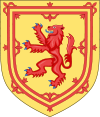 In 1669 William [Alexander and Elizabeth’s son] became the 1st Earl of Dundonald, p. 72 Lord Cochrane of Paisley and Ochiltree, with the Paisley church buildings as his town house. Dundonald’s (William) brother iwa Colonel Hugh Cochrane, veteran of the Swedish and Irish wars. Hugh’s daughter, Earl of Dundonald’s niece, Grizel Cochrane, married a deprived minister, Robert Miller (1st) of Ochiltree; Dundonald’s grand-daughter married Claverhouse of the ‘Killing Time’, (1685-1688) known as John Graham of Claverhouse (1648–1689), known to history as “Bonnie Dundee” or “Bluidy Clavers”, depending on one’s politics. On the outskirts of Paisley is Ralston,
In 1669 William [Alexander and Elizabeth’s son] became the 1st Earl of Dundonald, p. 72 Lord Cochrane of Paisley and Ochiltree, with the Paisley church buildings as his town house. Dundonald’s (William) brother iwa Colonel Hugh Cochrane, veteran of the Swedish and Irish wars. Hugh’s daughter, Earl of Dundonald’s niece, Grizel Cochrane, married a deprived minister, Robert Miller (1st) of Ochiltree; Dundonald’s grand-daughter married Claverhouse of the ‘Killing Time’, (1685-1688) known as John Graham of Claverhouse (1648–1689), known to history as “Bonnie Dundee” or “Bluidy Clavers”, depending on one’s politics. On the outskirts of Paisley is Ralston,
Blair Ilk 1205 2Cochrane2 Miller2 Simmons2 Choate zoe ToaG
William 1st Earl of DUNDONALD; aka William demino Cochrane de PAISLEY et Dundonald Of great service to the King during Civil War, he was first Laird of Cochrane to be elevated to the Peerage; made Baron 27 Dec 1647 and Earl 12 May, 1669. He served in Parliament, the King’s Privy Council, and Exchequer.
PM Churchill’s 8-Great Grandfather. Lady Diana’s 10-Great Grandfather. PM Cameron’s 11-Great Grandfather.
The 15th Earl is chief of clans Blair and Cochrane, or so I’ve read.
http://fabpedigree.com/s048/f000082.htm
1496 Scottish host assembled near Edinburgh and King James IV and Warbeck offered prayers at St Triduana’s Chapel and Our Lady Kirk of Restalrig.
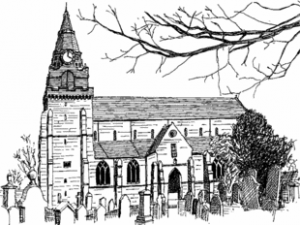 1507 William Elphinstone the Bishop of Aberdeen,
1507 William Elphinstone the Bishop of Aberdeen,
Cathedral Church of St Machar, Aberdeen. www.scotlandschurchestrust.org.uk
Elphinstone was engaged in preparing an adaptation of the Sarum breviary for the use of his diocese, that James IV on 15 Sept. 1507 granted a patent to Walter Chepman and Androw Myllar “to furnis and bring hame ane prent, with all stuff belangand tharto, and expert men to use the samyne, for imprenting within our Realme of the bukis of our Lawis, actis of parliament, croniclis, mess bukis, and portuus efter the use of our Realme, with addicions and legendis of Scottis sanctis, now gaderit to be ekit tharto, and al utheris bukis that salbe sene necessar, and to sel the sammyn for competent pricis.” [to furnish and bring home and print, with all stuff beloning thereto, and expert men to use the same, for imprintin within our Relme of the books of our laws, acts of parliament, cronicles, cook books and ports after the use of our Realm with additions and legends of Scots saints, now gathered to be attached thereto, and all other books that shall seem necessary, and to sell the same for competent prices.]
[to furnish and bring home and print, with all stuff beloning thereto, and expert men to use the same, for imprintin within our Relme of the books of our laws, acts of parliament, cronicles, cook books and ports after the use of our Realm with additions and legends of Scots saints, now gathered to be attached thereto, and all other books that shall seem necessary, and to sell the same for competent prices.]
William Elphinstone, Bishop of Aberdeen. (1431 – 25 October 1514) founder of the University of Aberdeen. Wikipedia.
1509 Louis XII of France; The Siege of Padua began. Scotland, as France’s Auld Alliance , from 1295 to 1560, will be engulfed in the fighting, including the Battle of Flodden Field, 1513. When James IV, King of Scots declared war on England to honour the Auld Alliance 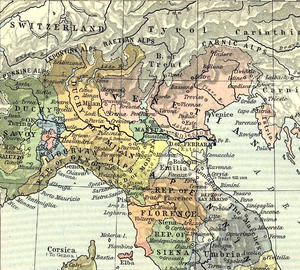 with France by diverting Henry VIII’s English troops from their campaign against the French king Louis XII. Henry VIII had also opened old wounds by claiming to be the overlord of Scotland which angered the Scots and the King. At this time England was involved in the War of the League of Cambrai – defending Italy and the Pope from the French (see Italian Wars) as a member of the “Catholic League”.
with France by diverting Henry VIII’s English troops from their campaign against the French king Louis XII. Henry VIII had also opened old wounds by claiming to be the overlord of Scotland which angered the Scots and the King. At this time England was involved in the War of the League of Cambrai – defending Italy and the Pope from the French (see Italian Wars) as a member of the “Catholic League”.
Northern Italy in 1494; by the start of the war in 1508, Louis XII had expelled the Sforza from the Duchy of Milan and added its territory to France.
1648 Treaty of Newport
1661 to 1829, Sometime in these years. Test Acts were English parliament’s religious penal laws against public officers. Only persons professing the Established Church could hold ‘public’ employment. Ban aimed at Presbyterians, (Dissenters from the Established Church, recusants, Catholics, Nonconformists, Lutherans, Quakers, Covenanters, Methodists, Congregationalists, Jews, Baptists, along with slaves, felons, imbeciles. and foreigners) The Corporation Act of 1661 required the sacrament from the Church of England within 12 months, sworn Oath of Allegiance, sworn Oath of Supremacy, sworn belief in Passive Obedience, renounce the Covenant, before election of any officer to a corporation (mercantile, financial, anything). Test Acts were later specifically outlawed by the United States Constitution (Article 6) in 1789. Roman Catholic and recusants ban repealed in UK circa 1829.
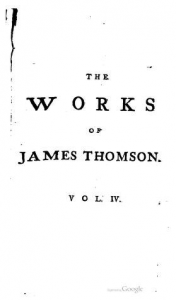 1700 James Thomson baptized. Fourth of nine children of Thomas Thomson and Beatrix Thomson (née Trotter).[2] Beatrix Thomson was born in Fogo, Berwickshire and was a distant relation of the house of Hume. Thomas Thomson was the Presbyterian minister of Ednam until eight weeks after Thomson’s birth, when he was admitted as minister of Southdean. Bookseller Andrew Millar 6th (Clans Stewart, Lockhart, Hunter).
1700 James Thomson baptized. Fourth of nine children of Thomas Thomson and Beatrix Thomson (née Trotter).[2] Beatrix Thomson was born in Fogo, Berwickshire and was a distant relation of the house of Hume. Thomas Thomson was the Presbyterian minister of Ednam until eight weeks after Thomson’s birth, when he was admitted as minister of Southdean. Bookseller Andrew Millar 6th (Clans Stewart, Lockhart, Hunter).
The works of James Thomson: etc. Printed for A. Millar 1757.
1732 Solomon Mack born (1732-1820) Lyme, New London, Connecticut, father of Lucy Smith (nee Mack). Macks of Inverness Scotland. 240 years later Lyme disease was diagnosed as a separate condition for the first time in 1975 in Old Lyme, Connecticut. Wikipedia.
1745 – Sunday. Leith volunteers sounded by the fire-bell. [TG77-124]
Edinburgh threatened and Colonel Gardiner commanded Hamilton’s regiment. [TG77-127]
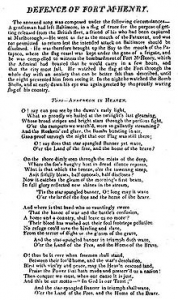 1814 – Battle of Baltimore, – British begin withdrawal.- Alexander Forrester Inglis Cochrane, during the War of 1812, Cochrane, then a vice admiral, served as Commander-in-Chief of the North American Station. During the Battle of Baltimore, Forrester was responsible for the bombardment of Fort McHenry in Baltimore, Maryland, the event which gave rise to Francis Scott Key’s poem which became “The Star-Spangled Banner”.
1814 – Battle of Baltimore, – British begin withdrawal.- Alexander Forrester Inglis Cochrane, during the War of 1812, Cochrane, then a vice admiral, served as Commander-in-Chief of the North American Station. During the Battle of Baltimore, Forrester was responsible for the bombardment of Fort McHenry in Baltimore, Maryland, the event which gave rise to Francis Scott Key’s poem which became “The Star-Spangled Banner”.
One of two surviving copies of the 1814 broadside printing of the “Defence of Fort McHenry”, a poem that later became the lyrics of the national anthem of the United States.
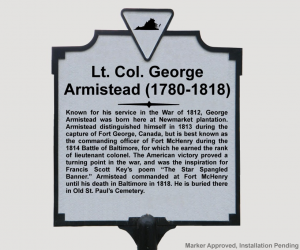 Colonel Brooke’s troops withdrew, and Admiral Cochrane’s fleet sailed off to regroup. Major George Armistead (1780 – 1818), Ft McHenry’s Commander, was soon promoted to lieutenant colonel. Much weakened by the arduous preparations for the battle, he died at age 38, only three years after the battle.
Colonel Brooke’s troops withdrew, and Admiral Cochrane’s fleet sailed off to regroup. Major George Armistead (1780 – 1818), Ft McHenry’s Commander, was soon promoted to lieutenant colonel. Much weakened by the arduous preparations for the battle, he died at age 38, only three years after the battle.
- The battle is commemorated in the Fort McHenry National Monument and Historic Shrine.
- Known for his service in the War 1812, George Armistead was born here at New Market plantation [Virginia]. Armistead distinguished himself in 1813 during the capture of Fort George, Canada, but is best known as the commanding officer of Fort McHenry during the 1814 Battle of Baltimore, for which he earned the rank of lieutenant colonel. The American victory proved a turning point in the war, and was the inspiration for Francis Scott Key’s poem ‘The Star Spangled Banner’. Armistead commanded at Fort McHenry until his death in Baltimore in1818. He is buried there in Old St Paul’s cemetery.
http://www.markerhistory.com/ lt-col-george-armistead-1780-1818-marker-nd-14/
Scot’s Commanders North American Station
Commodore Lord Alexander Colville (November 1759 – October 1762) Rear Admiral Lord Alexander Colville (October 1763 – September 1766)
- Colville of Easter Wemyss 1132 2Semple2Montgomery 2Cochrane2Miller 2Simmons2Choate zoe ToaG
Captain Archibald Kennedy, November 1766 – July 1767 (Senior Captain)
Rear Admiral Sir Charles Douglas (1783 – 1785),
- Douglas 1036 2Stewart 2Ruthven 2Kinchin 2Jared 2Simmons 2Choate – Douglas 2Montgomberie 2Blair 2Cochrane 2Miller 2Simmons 2Choate – Douglas 2Hamilton 2Stewart 2Miller 2Simmons 2Choate – Douglas 2Carlyle 2Semple 2Montgomery 2Cochrane 2Miller 2Simmons 2Choate
Vice Admiral George Murray (1793 – 1796), Vice Admiral Sir William Parker (1800-1802)
Vice Admiral Sir John Warren (1807 – 1810) (1813 – 1814),
Vice Admiral Sir Alexander Cochrane (1814 – 1815), Vice Admiral Sir Thomas Cochrane (1848 – 1851); Vice Admiral Sir Houston Stewart (1856 – 1860); Vice Admiral Sir Francis McClintock (1879 – 1882); Vice Admiral Sir James Erskine (1895 – 1897); Vice Admiral Sir Archibald Douglas (1903 – 1904); Vice Admiral Sir William Grant (1918 – 1919); Vice Admiral Sir James Fergusson(1924 – 1926); America and West Indies Station Vice Admiral Sir Charles Kennedy-Purvis (1940 – 1942);
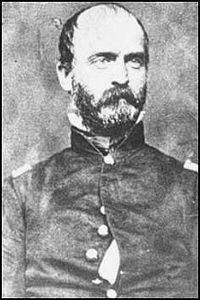 Major George Armistead, who ordered, paid for, and owned the Star Spangled Banner, was brother to Walker Keith Armistead and three other brothers who served during the War of 1812. Lewis Addison Armistead, (February 18, 1817 – July 5, 1863), Confederate brigadier general in the American Civil War, son of Walker, was wounded, captured, and died after Pickett’s Charge at the Battle of Gettysburg.
Major George Armistead, who ordered, paid for, and owned the Star Spangled Banner, was brother to Walker Keith Armistead and three other brothers who served during the War of 1812. Lewis Addison Armistead, (February 18, 1817 – July 5, 1863), Confederate brigadier general in the American Civil War, son of Walker, was wounded, captured, and died after Pickett’s Charge at the Battle of Gettysburg.
Lewis Addison Armistead (age 48), ![]() Captain (USA) 1839–61 (USA),
Captain (USA) 1839–61 (USA),![]() Brigadier General (CSA)
Brigadier General (CSA)
1854 The Siege of Sevastopol, Begins in September. Crimean War, ends in September. Scots Fusilier Guards, now the Scots Guards. 1st Royal Regiment: now the Royal Scots. 42nd Highlanders, The Black Watch. 6th Dragoon Guards: later the 6th Carabineers and now the Royal Scots Dragoon Guards. Royal Scots Greys: now the Royal 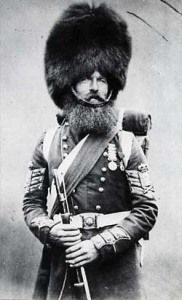 Scots Dragoon Guards. 71st Highland Light Infantry, now the Royal Highland Fusiliers. 72nd Highlanders: later the Seaforth Highlands, then the Queen’s Own Highlanders and now the Highlanders. 79th Highlanders, the Queen’s Own Cameron Highlanders: later the Queen’s Own Highlanders and now the Highlanders. 90th Regiment: later the Scottish Rifles; disbanded in 1966. 93rd Regiment: now the Argyll and Sutherland Highlanders.
Scots Dragoon Guards. 71st Highland Light Infantry, now the Royal Highland Fusiliers. 72nd Highlanders: later the Seaforth Highlands, then the Queen’s Own Highlanders and now the Highlanders. 79th Highlanders, the Queen’s Own Cameron Highlanders: later the Queen’s Own Highlanders and now the Highlanders. 90th Regiment: later the Scottish Rifles; disbanded in 1966. 93rd Regiment: now the Argyll and Sutherland Highlanders.
Colour Sergeant “Willie” McGregor of the Scots Fusilier Guards, photographed in 1856 after the Crimean War, wearing the post-war tunic but with his Crimean beard.
1925 Song Car Tunes by Fleischer brothers features Scottish folk song My bonnie Lies over the Ocean. Wikipedia- Obscure origin may be Charles Edward Stuart (‘Bonnie Prince Charlie’) after the defeat of the Prince at the Battle of Culloden in 1746 and his subsequent exile.
My Bonnie lies over the ocean
My Bonnie lies over the sea
My Bonnie lies over the ocean
Oh, bring back my Bonnie to me…
Bring back, bring back
Oh, bring back my Bonnie to me, to me
Bring back, bring back
Oh, bring back my Bonnie to me.
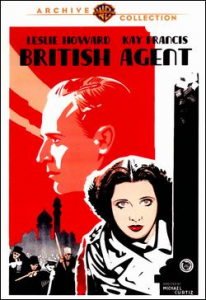 1934 British Agent is a 1934 espionage film directed by Michael Curtiz and starring Leslie Howard and Kay Francis. It is based on Memoirs of a British Agent, the 1932 autobiography of R. H. Bruce Lockhart,
1934 British Agent is a 1934 espionage film directed by Michael Curtiz and starring Leslie Howard and Kay Francis. It is based on Memoirs of a British Agent, the 1932 autobiography of R. H. Bruce Lockhart,
- Brus or Bruce 1050 2Stewart2Kennedy 2Montgomery2Blair 2Cochrane2Miller 2Simmons2Choate zoe ToaG
of the British Secret Service. Lockhart born in Anstruther, Fife, Scotland, the son of Robert Bruce Lockhart, the first headmaster of Spier’s School, Beith, Ayrshire, Scotland.
- Lockhart of Bar 1297 2Miller 2Simmons 2Choate 2Sorensen POSTER
His mother was a Macgregor. Ancestors include Bruces, Hamiltons, Cummings, Wallaces and Douglases. He also claimed he could trace a connection back to Boswell of Auchinleck.
Boswell of Auchinleck Ayr 13c 2Arnot2Colville 2Semple 2Montgomerie2Cochrane 2Miller2Simmons 2Choate zoe ToaG
 2001 World Trade Center Aftermath as Seen by IKONOS Satellite. Credit: GeoEye. Space Imaging’s IKONOS satellite collected this image of Manhattan, New York at 11:54 a.m. EDT on Sept. 15, 2001. The image shows the remains of the 1,350-foot towers of the World Trade Center, and the debris and dust that settled throughout the area. Also visible are many emergency and rescue vehicles in the streets.
2001 World Trade Center Aftermath as Seen by IKONOS Satellite. Credit: GeoEye. Space Imaging’s IKONOS satellite collected this image of Manhattan, New York at 11:54 a.m. EDT on Sept. 15, 2001. The image shows the remains of the 1,350-foot towers of the World Trade Center, and the debris and dust that settled throughout the area. Also visible are many emergency and rescue vehicles in the streets. 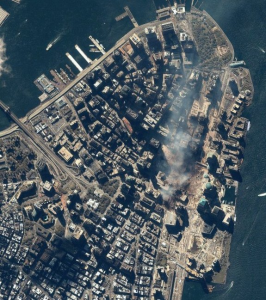 IKONOS orbits 423 miles above the Earth’s surface at a speed of 17,500 miles per hour.
IKONOS orbits 423 miles above the Earth’s surface at a speed of 17,500 miles per hour.
Ditto.
2014 Joseph Cramer, M.D.: The role of rocks in the Gaelic nations. There are so many rocks in Gaelic territories that everything is made from them: walls, roads, buildings, more walls, homes, roofs, castles — did I also mention walls — abbeys and monasteries all are rock solid? Rocks are so important to the Scots that one in particular is called the Stone of Destiny. It was the king of Scotland’s first throne. In 1296, the victorious Edward I of England, poetically called the Hammer of the Scots, looted the Stone, transported it to London and placed it under his own throne in Westminster Abby. It has been part of the coronation of every English king and queen since that time.
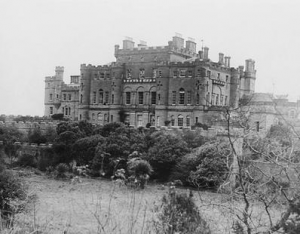 As a token of reconciliation, in 1996 the Stone was returned to Edinburgh Castle for public display along with the Honours of Scotland: the crown, the sword of state and the scepter of authority. However, there is a clause that the Stone of Destiny will be borrowed back for the next royalty investiture.
As a token of reconciliation, in 1996 the Stone was returned to Edinburgh Castle for public display along with the Honours of Scotland: the crown, the sword of state and the scepter of authority. However, there is a clause that the Stone of Destiny will be borrowed back for the next royalty investiture.
Culzean Castle is a castle near Maybole, Carrick on the Ayrshire coast of Scotland
http://www.deseretnews.com/article/865610995/The-role-of-rocks-in-the-Gaelic-nations.html?pg=all
Disclaimer: The author of each article published on this web site owns his or her own words. The opinions, beliefs and viewpoints expressed by the various authors and forum participants on this site do not necessarily reflect the opinions, beliefs and viewpoints of Utah Standard News or official policies of the USN and may actually reflect positions that USN actively opposes. No claim in public domain or fair use. © John Choate
Utah Standard News depends on the support of readers like you.
Good Journalism requires time, expertise, passion and money. We know you appreciate the coverage here. Please help us to continue as an alternative news website by becoming a subscriber or making a donation. To learn more about our subscription options or make a donation, click here.
To Advertise on UtahStandardNews.com, please contact us at: ed@utahstandardnews.com.


Comments - No Responses to “September 15th Scots Book of Days”
Sure is empty down here...